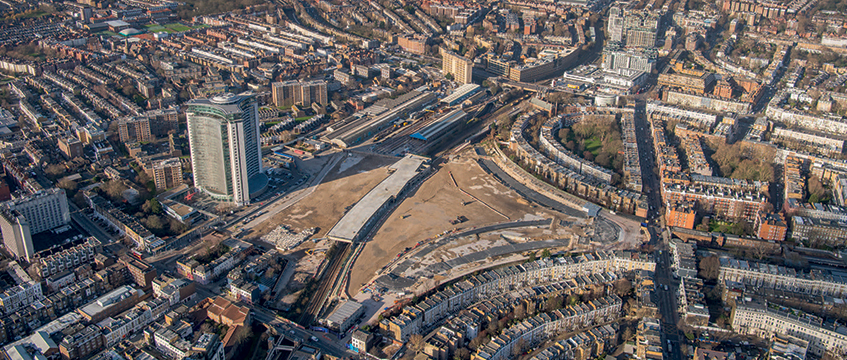Ritblat on London offices, patient development and next steps for Earls Court
Development is not an easy business at the best of times and the pandemic’s hastening of changes in offices and retail has naturally created trepidation in the industry.
But Jamie Ritblat, chairman and chief executive of Delancey, is looking on the bright side. For him, the acceleration of these trends will not necessarily be detrimental for real estate.
“If you’re in our business you’ve got to be a natural enthusiast,” he told EG, after winning the London Deal award for APG and Delancey’s £425m acquisition of the Earls Court development from Capco at this year’s EG Awards.
Development is not an easy business at the best of times and the pandemic’s hastening of changes in offices and retail has naturally created trepidation in the industry.
But Jamie Ritblat, chairman and chief executive of Delancey, is looking on the bright side. For him, the acceleration of these trends will not necessarily be detrimental for real estate.
“If you’re in our business you’ve got to be a natural enthusiast,” he told EG, after winning the London Deal award for APG and Delancey’s £425m acquisition of the Earls Court development from Capco at this year’s EG Awards.
His outlook for offices and retail in London is no exception to this rule.
“I have every expectation that offices will continue,” said Ritblat. “They might adapt in terms of how they’re used – maybe we’ll have less meeting rooms, maybe more common uses.”
Where retail is involved, Ritblat suggested the impact of online shopping could be different for city centres such as London than it would be outside of these.
The tricky aspect lies in figuring out how Delancey’s 25-acre Earls Court project can adapt to this shifting landscape. These are decisions that Ritblat does not want to rush.
“If we’d been looking at this whole development two years ago, we’d have been almost designing something that’s out-of-date,” he said.
“I often say we are trying to design something for the 22nd century, and that’s quite a challenge. We are taking our time and thinking through what that really means.”
During the pandemic Delancey has worked on advancing plans for the site, appointing architects Hawkins\Brown and Studio Egret West in June to devise a new masterplan.
In the following month the developer unveiled plans for a scheme by Pilbrow & Partners at 344-350 Old Brompton Road, to act as a gateway to the wider development.
The scheme will be carried out by the Earls Court Development Company, led by former Lendlease director Rob Heasman, who was appointed as chief executive of the firm in September.
Ritblat said the aim now was to move into the next stages of design and sit down with all those with vested interests to “work out what works and how we can produce something that’s very relevant to Earls Court, and all the emotion… that has existed there for the last 10 years”.
And having a large, central London site has advantages for Delancey in achieving a scheme that works, since it is “more possible” to weave together a variety of uses, including cultural and community uses, than if it was outside of the capital.
“The neighbourhood is incredibly important, but [it is important] also to create something that is special for London as a city,” he said. “Now more than ever, we need to make that statement.”
He added: “We need to look to tomorrow, and this is a project about tomorrow.”
To send feedback, e-mail louise.dransfield@egi.co.uk or tweet @DransfieldL or @estatesgazette
Photo © Earls Court Development Company











